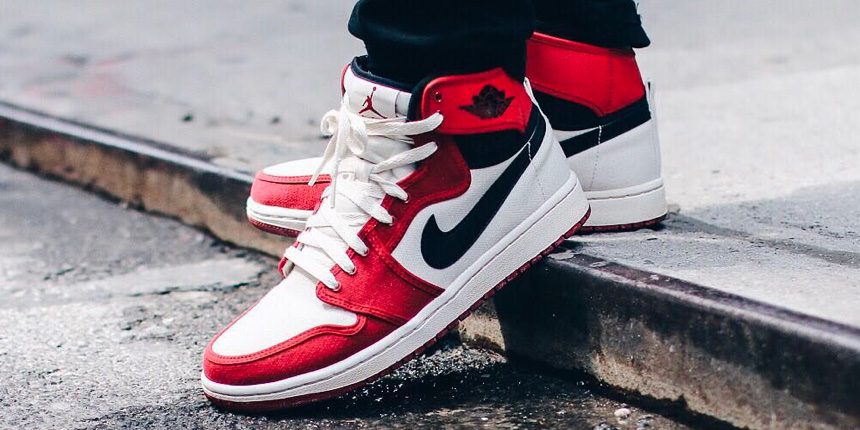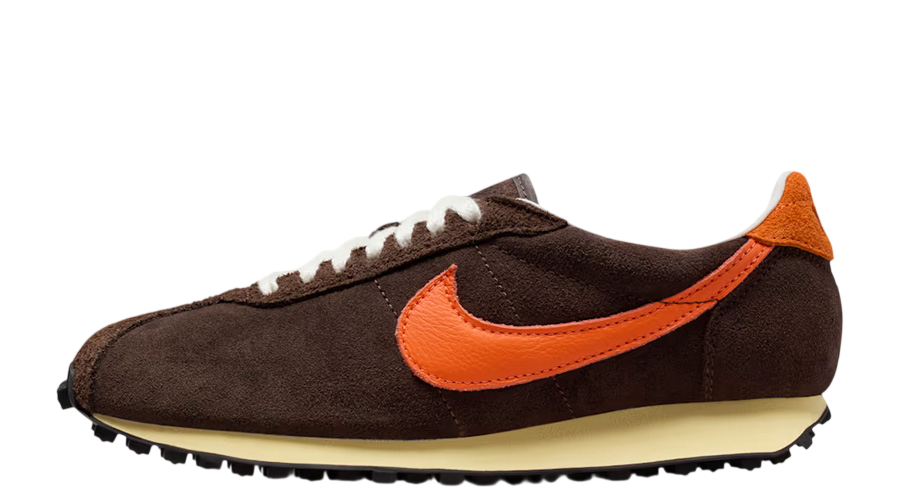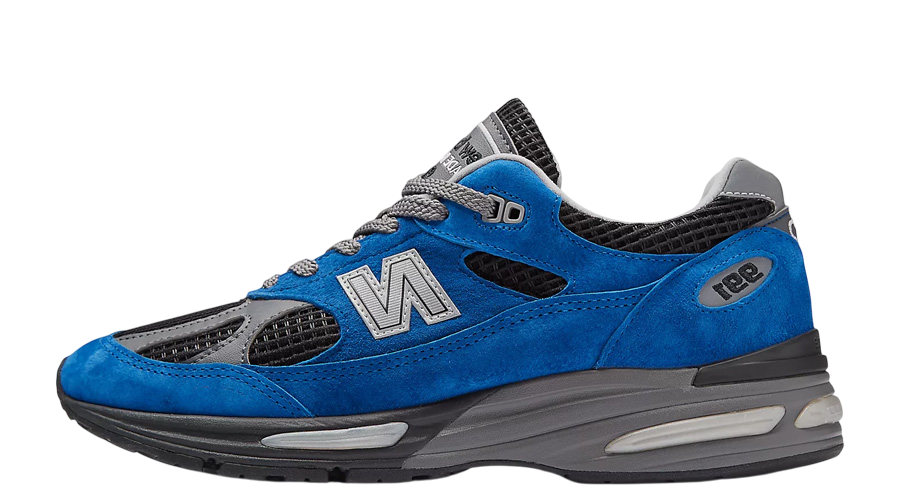What’s the Difference Between the Air Jordan 1 and AJKO?

In the world of sneakers, very few have managed to leave an impact as big as the Air Jordan 1. Since its initial release in 1985, the iconic silhouette not only revolutionised basketball footwear, but also the sneaker scene as a whole. However, amidst the myriad of Air Jordan releases from the brand, there emerges a variant that has sparked curiosity and debate among enthusiasts: the Air Jordan 1 KO (AJKO).
A silhouette that rocks the same look as its older brother, it’s now seemingly holding its own ground. In this article, we’ll be delving deeper into the intricacies of these two models and discussing their similarities and differences.

Is the Air Jordan 1 and Air Jordan 1 KO the Same?
At first glance, the AJ1 and AJKO might appear almost identical, sharing the same shape and iconic. However, upon closer inspection you’ll find subtle nuances that distinguish the two. The AJ1, originally designed by Peter Moore, boasts a premium leather upper, providing not only a luxurious feel but also enhanced durability. On the other hand, the AJKO, while maintaining the same overall design, opts for a full canvas construction. This material choice not only affects the shoe’s aesthetic, performance, and longevity but seemingly its appeal.
The difference in materials also leads to a variation in comfort and fit, with the leather of the AJ1 moulding to the wearer’s foot over time, creating a personalised fit. The canvas of the AJKO, while lighter, does not provide the same level of conformity and support. Furthermore, the soles of the two shoes are made differently, with the AJ1 featuring a more robust and durable outsole, a testament to its hardwood roots.
Is the AJKO Just a “Knock Off” Air Jordan 1?
The AJKO inherently carries with it the notion of being a “knock off,” given its acronym actually does stand for “Air Jordan Knock Off.” While this nomenclature might suggest a lesser version of the Air Jordan 1, delving into the history and intention behind the AJKO’s creation paints a different picture. When introduced alongside the AJ1, the AJKO wasn’t positioned as a low-grade alternative; rather, it was an inventive take on the classic, offering a different material choice and aesthetic for a varied audience.
The AJKO is a testament to the innovation and experimentation that was rife during the era of its inception. Its canvas upper, contrasting the premium leather of the AJ1, wasn’t a cost-cutting measure but a design choice that provided a different look and feel, catering to those who preferred the lightweight and breathable nature of canvas. It was a bold move, as it altered a legendary design, yet it was done with the intention of diversification rather than diminution.
Discontinued for decades, the AJKO later re-emerged in 2010, not as a forgotten relic but as a sought-after collector’s item. This renaissance not only reaffirmed its place in the Air Jordan lineage, but also helped dispel the misconceptions surrounding its status. The re-releases, while staying true to the original design, incorporated minor improvements, enhancing comfort and durability and showcasing the brand’s commitment to both the AJ1 and AJKO’s legacy.

What’s the Story Behind the AJKO?
The AJKO throws back to the year 1986, a pivotal time in the world of basketball and trainers. Nike, in collaboration with Michael Jordan, had just launched the OG Air Jordan 1, a sneaker that has irrevocably transformed footwear to what it is today. Riding on the wave of the AJ1’s unprecedented success, Nike introduced the AJKO, a trainer that echoed the design of the AJ1 but presented a stark contrast in terms of materials and aesthetics.
The introduction of the AJKO was a strategic move by Nike, demonstrating its ability to innovate and cater to a diverse market. The canvas material used in the AJKO was not only a nod to the basketball shoes of the past but also offered a lighter and more affordable alternative to the leather-clad AJ1. This divergence was not about creating a hierarchy but about providing options, and the AJKO successfully carved out its own niche in the sneaker world.
What’s the Difference Between the Air Jordan 1 and AJKO?
Delving into the specifics, the differences between the AJ1 and AJKO are both subtle and significant. The most glaring distinction lies in the materials used. The AJ1 boasts a luxurious full-grain leather upper, giving it a premium feel and durability. The AJKO, on the other hand, features a canvas upper, resulting in a subtle lighter and more breathable sneaker.
In terms of design, while both shoes share a similar silhouette and colourblocking for most releases, the AJKO incorporates its unique elements. The Swoosh, for instance, has a distinct texture, and its tongue label sports the AJKO branding, setting it apart from the AJ1’s branding elements. Additionally, the AJKO opts for a different outsole pattern, further setting itself apart from its leather counterpart.
Despite these differences, it’s crucial to note that the AJKO is not a downgrade but a variant, offering a different perspective on a classic design. Over the years, the sneaker community has grown to appreciate the AJKO, proven through a vast selection of hyped collaborations and colourways.

The Bottom Line
It’s evident that while the Air Jordan 1 and the AJKO share a name and a lineage, they offer distinct experiences for the wearer. The AJ1 is a piece of basketball and sneaker royalty, a timeless classic that’s made its mark both on and off the court. The AJKO, with its unique material choice and intriguing backstory, offers a different but equally compelling narrative.
Choosing between the two isn’t about right or wrong; it’s about preference, values, and what you’re looking to get out of your trainers. Whether you lean towards the premium, timeless appeal of the AJ1 or the understated, unique charm of the AJKO, you’re investing in a piece of footwear history with a story to tell. In the ever-evolving world of sneakers, both have secured their place, and both have something unique to offer.
Thinking of copping the latest Air Jordan 1 or Air Jordan 1 KO? Make sure to check out Nike’s official website here!
Frequently Asked Questions
Is the AJKO a lesser version of the Air Jordan 1?
While it’s easy to perceive the AJKO as a lesser sibling due to its canvas construction and somewhat subdued cultural presence, it isn’t a lesser version but rather an alternative narrative within Jordan Brand, celebrating different materials and aesthetic nuances.
Is the sizing and fit similar between the Air Jordan 1 and AJKO?
While sharing a similar silhouette, nuances in construction and material may yield subtle differences in fit and feel. It is always advisable to try them on or consult sizing guides and reviews to navigate through sizing accurately.
Can the AJKO be considered as a performance basketball shoe?
While it shares aesthetic semblance with the Jordan 1, the AJKO, with its canvas construction, is generally not regarded as a performance basketball shoe but rather celebrated for its lifestyle and casual wear appeal.
How does the pricing of the AJKO compare with the Jordan 1?
Pricing can fluctuate based on factors like collaboration, rarity, and release year. Generally, Jordan 1s may fetch a higher price point, given their iconic status, while AJKOs can be relatively more accessible, though exceptions based on aforementioned factors can occur.
Where can I purchase authentic Jordan 1 and AJKO sneakers?
Both silhouettes can be found at official Nike retailers, the Nike website, and authorised sneaker retailers. For secondary purchases, trusted platforms like StockX and GOAT provide authenticated reselling services, ensuring authenticity and quality.











